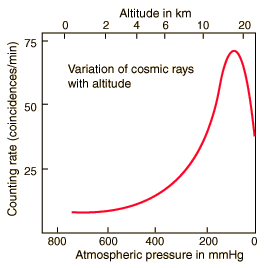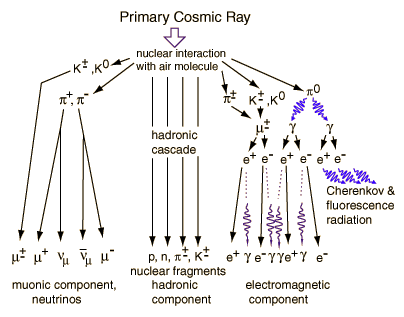Cosmic Rays
Cosmic ray is the term given to high energy radiation which strikes the Earth from space. Some of them have ultrahigh energies in the range 100 - 1000 TeV. Such extreme energies come from only a few sources like Cygnus X-3. The peak of the energy distribution is at about 0.3 GeV.
The intensity of cosmic radiation increases with altitude, indicating that it comes from outer space. It changes with latitude, indicating that it consists at least partly of charged particles which are affected by the earth's magnetic field. The illustration at right shows that the detected cosmic ray flux peaks at about 15 km in altitude and then drops sharply (note the logarithmic scale on the altitude). This kind of variation was discovered by Pfotzer in 1936. It suggests that the detection method used was mainly detecting secondary particles rather than the primary particles reaching the Earth from space. |
 |
Analysis of the particle populations in cosmic rays yields hints about their origin.
| Composition of cosmic rays | The solar wind |
| HyperPhysics***** Astrophysics | R Nave |
